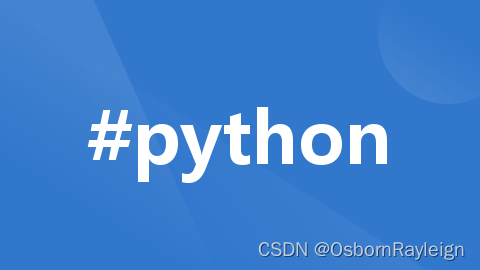
- Python (使用Flask框架)cnavmall.cn
python
from flask import Flask, render_template, request
app = Flask(name)
products = [
{“id”: 1, “name”: “Product 1”, “price”: 100},
{“id”: 2, “name”: “Product 2”, “price”: 200},
# … 更多产品
]
@app.route(‘/’)
def index():
return render_template(‘index.html’, products=products)
… 其他路由和视图函数
if name == ‘main’:
app.run(debug=True)
HTML模板 (templates/index.html):
html
Welcome to My Shop
- {% for product in products %}
- {{ product.name }} - {{ product.price }}
- {% endfor %}
const products = [
{ id: 1, name: ‘Product 1’, price: 100 },
{ id: 2, name: ‘Product 2’, price: 200 },
// … 更多产品
];
app.get(‘/’, (req, res) => {
res.send( <h1>Welcome to My Shop</h1> <ul> ${products.map(p =>
- ${p.name} -
$$
{p.price} ).join('')} </ul>);
});app.listen(3000, () => console.log(‘Server started on port 3000’));
3. Java (使用Spring Boot)
Java代码会相对较长且复杂,但这里是一个简单的Controller示例:java
import org.springframework.web.bind.annotation.GetMapping;
import org.springframework.web.bind.annotation.RestController;import java.util.Arrays;
import java.util.List;@RestController
public class ShopController {private List<Product> products = Arrays.asList( new Product(1, "Product 1", 100), new Product(2, "Product 2", 200) // ... 更多产品 ); @GetMapping("/") public String index() { // 这里通常会返回HTML或JSON,但为了简单起见,我们只返回字符串 StringBuilder sb = new StringBuilder("<h1>Welcome to My Shop</h1><ul>"); for (Product product : products) { sb.append("<li>").append(product.getName()).append(" - $").append(product.getPrice()).append("</li>"); } sb.append("</ul>"); return sb.toString(); } // Product类和其他必要的配置和依赖将在这里定义}
这些示例只是起点,真实的购物商城将需要更多的功能和复杂性。如果你打算开发一个完整的商城,我建议你深入研究每种语言的最佳实践、框架和库,并考虑使用现有的电商解决方案或平台来加速开发过程。由于“多种电脑语言”是一个广泛的范围,我将为你提供在几种流行编程语言中创建简单购物商城代码的基本框架或示例。请注意,这些示例将非常基础,仅用于说明目的,并不包含完整的商城功能(如用户认证、支付处理、库存管理等)。- Python (使用Flask框架)
python
from flask import Flask, render_template, request
app = Flask(name)
products = [
{“id”: 1, “name”: “Product 1”, “price”: 100},
{“id”: 2, “name”: “Product 2”, “price”: 200},
# … 更多产品
]@app.route(‘/’)
def index():
return render_template(‘index.html’, products=products)… 其他路由和视图函数
if name == ‘main’:
app.run(debug=True)
HTML模板 (templates/index.html):html
My Shop Welcome to My Shop
- {% for product in products %}
- {{ product.name }} - {{ product.price }}
- {% endfor %}
const products = [
{ id: 1, name: ‘Product 1’, price: 100 },
{ id: 2, name: ‘Product 2’, price: 200 },
// … 更多产品
];app.get(‘/’, (req, res) => {
res.send(<h1>Welcome to My Shop</h1> <ul> ${products.map(p =>- Python (使用Flask框架)
- ${p.name} -
$$
{p.price} ).join('')} </ul>);
});app.listen(3000, () => console.log(‘Server started on port 3000’));
3. Java (使用Spring Boot)
Java代码会相对较长且复杂,但这里是一个简单的Controller示例:java
import org.springframework.web.bind.annotation.GetMapping;
import org.springframework.web.bind.annotation.RestController;import java.util.Arrays;
import java.util.List;@RestController
public class ShopController {private List<Product> products = Arrays.asList( new Product(1, "Product 1", 100), new Product(2, "Product 2", 200) // ... 更多产品 ); @GetMapping("/") public String index() { // 这里通常会返回HTML或JSON,但为了简单起见,我们只返回字符串 StringBuilder sb = new StringBuilder("<h1>Welcome to My Shop</h1><ul>"); for (Product product : products) { sb.append("<li>").append(product.getName()).append(" - $").append(product.getPrice()).append("</li>"); } sb.append("</ul>"); return sb.toString(); } // Product类和其他必要的配置和依赖将在这里定义}
这些示例只是起点,真实的购物商城将需要更多的功能和复杂性。如果你打算开发一个完整的商城,我建议你深入研究每种语言的最佳实践、框架和库,并考虑使用现有的电商解决方案或平台来加速开发过程。
 简易购物商城搭建
简易购物商城搭建
























 被折叠的 条评论
为什么被折叠?
被折叠的 条评论
为什么被折叠?








